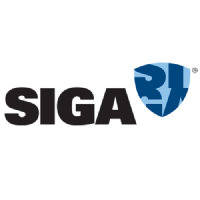
Adobe Inc
NASDAQ:ADBE

Adobe Inc





In the sprawling landscape of technology companies, Adobe Inc. stands out as a titan, a company that began its journey in a small Silicon Valley garage in 1982. Initially focused on revolutionizing desktop publishing, Adobe launched with its PostScript page description language, which became a pivotal tool for the printing industry. Fast forward to today, Adobe has transformed business sectors with its suite of design, marketing, and multimedia software. At the heart of its operations is the Creative Cloud platform, a once-groundbreaking shift from perpetual licensing to subscription-based models, which includes industry staples like Photoshop, Illustrator, and Premiere Pro. This model not only brings recurring revenue but also encourages user stickiness, as regular updates and cloud storage become integral to the creative ecosystem.
Adobe's prowess isn't confined to creativity alone; it extends to its Experience Cloud, a powerhouse of digital marketing solutions that capitalize on data analytics, customer intelligence, and automation to drive personalized marketing strategies for businesses worldwide. This arm harnesses Big Data, machine learning, and AI to offer insights that help companies transform customer engagement into actionable growth. Furthermore, Adobe's Document Cloud, featuring the ubiquitous Acrobat Reader and PDF services, caters to the growing demand for digital document management and e-signature solutions. The interplay of these platforms under Adobe's expansive umbrella not only unifies creative and business workflows but also creates a sustainable financial engine that capitalizes on the convergence of technology and creativity.
Earnings Calls
In 2024, SIGA reported $133 million in product sales, a 2% increase marking consecutive growth. The fourth quarter alone saw $80 million due to diverse revenue, including an $11 million international sale. The company maintains a robust cash position of $155 million with no debt. Looking ahead, they anticipate completing a $70 million order in 2025 and aim for an FDA submission for TPOXX’s post-exposure prophylaxis by early 2026. SIGA remains committed to expanding its product market globally and reinforced its position as a critical player in bioterrorism preparedness.
Management

Shantanu Narayen is an accomplished business executive and the Chairman and Chief Executive Officer (CEO) of Adobe Inc. Born on May 27, 1962, in Hyderabad, India, Narayen pursued an undergraduate degree in electronics and communication engineering from Osmania University. He then earned an MBA from the University of California, Berkeley, and a master's degree in computer science from Bowling Green State University. Narayen began his career at Apple, where he gained foundational industry experience before moving on to Silicon Graphics, where he contributed significantly to desktop and collaboration products. In 1998, he co-founded a company called Pictra, focusing on digital photo sharing over the Internet. Narayen joined Adobe in 1998 as a senior vice president of worldwide product development. His strategic vision and leadership qualities quickly became apparent, leading to his promotion as the Chief Operating Officer (COO) in 2005. In 2007, he was appointed CEO. Under his leadership, Adobe successfully transitioned its business model from selling discreet software products to a subscription-based service with Adobe Creative Cloud, which significantly boosted the company's growth and positioned it as a leader in digital media and marketing solutions. Throughout his tenure, Narayen has been recognized for his ability to innovate and pivot Adobe's product offerings, ensuring the company remains at the forefront of a rapidly evolving technology landscape. He also serves on the board of Pfizer and has been listed multiple times on various influential business leader rankings. Overall, Shantanu Narayen's leadership at Adobe is characterized by a strong focus on innovation, customer-centric solutions, and strategic acquisitions that have expanded Adobe's product portfolio and market presence globally.

Daniel J. Durn serves as the Executive Vice President and Chief Financial Officer (CFO) of Adobe Inc. In his role, he is responsible for Adobe’s global finance functions, including financial operations, investor relations, procurement, and corporate strategy and development. Before joining Adobe, Durn was the CFO at Applied Materials, where he played a key role in driving strategic and financial initiatives. He also has extensive experience working in the finance sector with executive positions held at companies such as NXP Semiconductors and Freescale Semiconductor. Durn is known for his strong background in financial management and strategic planning, contributing significantly to Adobe's growth and performance. He holds an MBA from Columbia Business School and a bachelor’s degree in Business from San Diego State University.

David Wadhwani is a prominent technology executive currently serving as the President of Digital Media Business at Adobe Inc. In this role, he oversees the global strategy and execution for Adobe's Creative Cloud and Document Cloud product offerings, which include industry-standard software such as Adobe Photoshop, Illustrator, and Acrobat. His leadership is pivotal in driving Adobe's creative software subscription services and shaping the future of digital media and content creation. Wadhwani has a strong background in the software industry, having previously served in various leadership positions. Before rejoining Adobe, he was a general partner at Greylock Partners, a venture capital firm, where he focused on investing in enterprise software and services. Prior to that, he was the CEO of AppDynamics, a leading application performance management and IT operations analytics company, where he guided the company through a period of significant growth and eventually its acquisition by Cisco. This isn't Wadhwani's first tenure at Adobe; he initially joined Adobe through the company's acquisition of Macromedia in 2005, rising through the ranks to eventually lead Adobe’s digital media business. Wadhwani is known for his strategic vision, his ability to drive growth in software business segments, and his expertise in the intersection of technology and creativity. He holds a Bachelor’s degree in computer science from Brown University. Wadhwani's leadership and contributions to the tech industry are well-regarded, and his work continues to influence the evolution of digital creativity tools and platforms.

Scott K. Belsky is an entrepreneur, author, and executive known for his role as the Chief Product Officer and Executive Vice President at Adobe Inc. He has made significant contributions to the creative software industry, particularly through his efforts to enhance and expand Adobe’s suite of products. Belsky is also recognized for founding Behance in 2006, a platform designed to showcase and discover creative work. Under his leadership, Behance grew into the leading creative network used by millions of professionals worldwide, which Adobe later acquired in 2012. Throughout his career, Belsky has focused on fostering creativity and helping creative professionals connect and share their work. He has written several books on the subject, including "Making Ideas Happen," which explores how to navigate the challenges of implementing creative ideas. At Adobe, Belsky has been instrumental in advancing the development and adoption of creative cloud applications, emphasizing user experience and community engagement. His work continues to influence the way creative software evolves, ensuring it meets the changing needs of artists, designers, and creators globally.

Dr. Anil S. Chakravarthy is known for his leadership role at Adobe Inc., where he serves as the Executive Vice President and General Manager of the Digital Experience business unit. He joined Adobe in 2020, bringing a wealth of experience in enterprise technology and data management. Before joining Adobe, Dr. Chakravarthy was the CEO of Informatica, a company specializing in enterprise cloud data management. During his tenure, he led the company through a major transformation and was instrumental in transitioning Informatica to a cloud-focused business model. Dr. Chakravarthy holds a Ph.D. in Operations Research and a Master of Science in Engineering from the Massachusetts Institute of Technology (MIT). His academic background complements his extensive experience in the industry, which includes notable roles at Symantec, where he worked on various products and solutions and helped drive strategic shifts in the company. At Adobe, Dr. Chakravarthy's focus is on expanding the Digital Experience business, which includes a suite of applications and services designed to help businesses enhance their customer experiences through digital means. His leadership is pivotal in driving innovation and growth across Adobe's offerings in digital marketing, analytics, and commerce.

Cynthia A. Stoddard serves as the Senior Vice President and Chief Information Officer (CIO) at Adobe Inc. In her role, she oversees Adobe's global Information Technology and Cloud Operations teams. Stoddard is responsible for driving the company's IT strategy and ensuring that Adobe's technology infrastructure aligns with its overall business goals. She plays a crucial role in implementing innovative solutions and technologies that enhance efficiency, collaboration, and security across the organization. Before joining Adobe in 2016, Stoddard accumulated extensive experience in the IT field, holding several senior leadership positions. Her previous roles include serving as the Senior Vice President and Chief Information Officer at NetApp, where she led key projects to enhance business operations and IT capabilities. She has also worked at organizations such as Safeway Inc., where she was responsible for leading efforts in IT transformation and service management. Stoddard is highly regarded for her ability to integrate IT systems with business strategy, ensuring technology serves as a catalyst for growth and innovation. She is also recognized for her leadership in driving diversity and inclusion within the technology sector. Throughout her career, she has been an advocate for modernization and cloud technologies, supporting Adobe's transformation initiatives to deliver exceptional digital experiences. Her efforts have not only contributed to Adobe's operational success but have also earned her recognition in the industry as a leading CIO. Stoddard holds a Bachelor’s degree in Accounting from Western New England University and an MBA from Marylhurst University, highlighting her strong educational background that complements her professional achievements.

Dana Rao is the Executive Vice President, General Counsel, and Corporate Secretary at Adobe Inc. He leads the company's legal, security, and policy departments, playing a crucial role in ensuring compliance, strategic direction, and oversight of legal matters. Rao joined Adobe in 2012 and has since contributed significantly to the company's growth and innovation. Before joining Adobe, he spent 10 years at Microsoft, where he worked on various legal and policy issues. He holds a J.D. from Stanford Law School and a bachelor’s degree in electrical engineering from Villanova University. With his extensive experience and expertise, Rao is a key figure in guiding Adobe's corporate and legal strategies.

Gloria Chen is the Chief People Officer and Executive Vice President of Employee Experience at Adobe Inc. She plays a pivotal role in shaping the company's people and workplace strategies, which are critical components of Adobe's business success. With a focus on fostering a dynamic and inclusive work environment, she oversees various functions including talent acquisition, development, compensation, benefits, and workplace operations. Gloria Chen joined Adobe in 1997 and has held various positions across the company. Her extensive experience at Adobe spans several leadership roles, particularly in the strategic and operational aspects of the business. Before becoming the Chief People Officer, she served in positions that enabled her to closely work with Adobe’s senior leadership on key transformational initiatives, including business model transition and market expansion strategies. Chen is respected for her strategic acumen and her deep commitment to promoting a culture of innovation and inclusion. She holds a master's degree in electrical and computer engineering from Carnegie Mellon University and an MBA from Harvard Business School, underscoring her strong background in both technical and business disciplines. Through her leadership, Gloria Chen continues to be a crucial figure in Adobe's continuous growth and success by ensuring that the company's workforce remains engaged, motivated, and aligned with Adobe's core values and mission.

Shanmugh Natarajan is a notable figure within Adobe Inc., where he has held prominent positions contributing to the company's technological advancements and management strategies. He served as the Managing Director and Vice President of Adobe's Operations in India, overseeing one of the company's largest R&D centers outside the United States. Natarajan played a crucial role in driving innovation and enhancing Adobe’s product portfolios, which include widely acclaimed software like Adobe Creative Cloud and Adobe Document Cloud. His leadership and strategic vision have significantly propelled Adobe’s growth and development in the digital experience space. His deep expertise in software development and product engineering has been instrumental in fostering a culture of innovation at Adobe's India operations.

Simon Dale is a distinguished executive at Adobe Inc., well-regarded for his strategic and operational expertise in the technology sector. He serves as Managing Director for Southeast Asia (SEA) and Korea, a role in which he is responsible for driving Adobe's growth and market presence across these regions. With over 30 years of experience in the tech industry, Simon has held pivotal roles, showcasing his leadership in business development, sales, and technology management. Before joining Adobe, Simon Dale held significant positions at various tech giants. His career includes impactful tenures at SAP, where he was involved in driving the company's cloud business expansion. His experience extends to leadership roles at technology leaders like Microsoft and IBM, where he developed a deep understanding of the enterprise software landscape. Simon is known for his commitment to innovation, digital transformation, and building high-performance teams. His professional journey reflects a blend of technical acumen and business strategy, focusing on leveraging technology to achieve business objectives. Simon Dale's leadership at Adobe is characterized by his efforts to foster customer success, enhance digital experiences, and support the creative and document cloud capabilities that Adobe is renowned for.




















































 You don't have any saved screeners yet
You don't have any saved screeners yet

Welcome to the SIGA business update call. Before returning the call over to SIGA management, please note that any forward-looking statements made during this call are based on management's current expectations, observations and are subject to risks and uncertainties that could cause actual results to differ materially from the forward-looking statements. SIGA does not undertake any obligation to update publicly any forward-looking statements to reflect events or changed circumstances after this call. For a discussion of factors that could cause actual results to differ, please see the company's filings with Securities and Exchange Commission, including, without limitation, the company's annual report on Form 10-K for the year ended December 31, 2024, and its subsequent reports on Form 10-Q and Form 8-K.
With that, I will now turn the call over to Diem Nguyen, Chief Executive Officer of SIGA. Diem, please go ahead.
Good afternoon, everyone, and thank you for joining today's call and review of our business results for the fourth quarter and full year of 2024. I am joined by Dan Luckshire, our Chief Financial Officer, and we appreciate this opportunity to provide an update to our company. After the update, we'll be happy to answer your questions.
I'm pleased to share that 2024 was a year of impactful execution and strong financial performance for SIGA. In 2024, we also made considerable progress on several initiatives to drive shareholder value including, one, continuing our partnership with the U.S. government; two, advancing regulatory approvals for TPOXX; and three, cultivating strategic partnerships to expand global access to TPOXX. With product sales of $133 million, up approximately 2% from 2023, we delivered the second consecutive year of product sales growth, reinforcing the critical role that TPOXX and a comprehensive smallpox preparedness program play in strengthening national security.
Additionally, our results highlight the strength of our financial position. Of the $133 million in product sales, about $80 million was generated in the fourth quarter from a diverse mix of revenue sources, led by deliveries of oral and IV TPOXX to the U.S. Strategic National Stockpile. This was followed by deliveries of both oral and IV TPOXX to the U.S. Department of Defense and deliveries of oral TPOXX in the international markets. The latter included a notable sale in East Asia for $11 million of oral TPOXX, which is more than double the size of the largest higher individual TPOXX sale in the region. This latest international milestone follows the first sale of TPOXX in Africa in the third quarter in response to a request from the Ministry of Health in Morocco.
Beyond the 2024 top line financial results, we have taken an important step to advance our key initiatives and strengthen our company, which we believe will produce shareholder value over time. I would like to highlight some of these steps. We continue to make progress on our international markets. Two examples stand out.
First, midway through 2024, our company assumed responsibility for promoting TPOXX outside the U.S. from Meridian Medical Technologies. This action has brought us much closer to our current and potential future customers, thereby enabling us to better understand and meet their needs. We've started to build an international sales and marketing infrastructure in 2024 and plan to continue to invest in that infrastructure to achieve our full potential in the international markets. We believe our conversations and actions will yield positive results over time.
Second, as announced earlier this year, we achieved another international regulatory approval when Japan's Pharmaceuticals and Medical Devices Agency in collaboration with the Japan Ministry of Health, Labour and Welfare approved TPOXX for the treatment of a broad range of orthopoxviruses. This approval marked another important milestone in our efforts to expand access to TPOXX. Additionally, it, coupled with the growing sales of TPOXX in East Asia, reinforces the value of antiviral stockpiling to ensure supply resilience during immediate crisis response to safeguard communities and individuals against smallpox.
To obtain this approval and in collaboration with our local partner, Japan Biotechno Pharma, we submitted a robust data package, which included studies involving healthy human volunteers, nonhuman primates and rabbits. No other drug approved to treat smallpox or any other orthopoxvirus is supported by such a comprehensive and extensive data package.
Shifting gears on cultivating strategic partnerships. In October, we announced an exclusive license to a portfolio of preclinical fully human monoclonal antibodies from the Vanderbilt University that have the potential to create a broad range of orthopoxviruses, including smallpox and mpox. Leveraging our existing capabilities to create new opportunities over the long term, we believe this portfolio has the potential to complement our TPOXX franchise and provide patients with additional therapies in this space.
While monoclonal antibodies represent an early-stage component of our pipeline, our TPOXX post-exposure prophylaxis program for smallpox or PEP is far more advanced. We continue to collaborate with the CDC in consultation with the FDA to complete the analysis of the samples collected to support the study's immunogenicity objective. As a reminder, the safety objective has already been successfully achieved. The CDC's work is underway, and we believe they will complete their analysis around the middle of this year. Based upon their projected time line, we are now targeting an FDA submission for the PEP indication in early 2026.
In addition to successes, we've also faced some challenges this year given the PALM 007 and STOMP clinical trial results in mpox. While the results of these trials were not a surprise given the mechanism action of TPOXX and the design of the trials, they have led to some important discussions about TPOXX that I'd like to address today. By the way of background, TPOXX was developed as a treatment for smallpox with the primary goal of reducing mortality and saving lives in an event of an outbreak. Approval under the FDA's rigorous animal rule, TPOXX is supported by extensive studies demonstrating its safety and efficacy in reducing mortality from smallpox.
Since smallpox vaccination programs were discontinued several decades ago, herd immunity has diminished, leaving populations vulnerable to its potential reintroduction. For example, in the U.S., approximately 190 million people were born after the end of the routine vaccination, leaving these Americans vulnerable. Additionally, the robustness of the immune response in those vaccinated more than 50 years ago cannot be determined. As such, the potential for its intentional reintroduction remains a serious concern.
For PALM 007 and STOMP, SIGA donated the product to trial sponsors to help advance mpox research and support the response to the 2022 global mpox outbreak. Because mpox is a far milder and largely self-resolving disease with a much lower mortality rate than smallpox, these trials were designed to measure the time for all lesions to heal between patients receiving TPOXX and those receiving placebo. While these studies did not show statistical significance difference between tecovirimat and placebo at this primary endpoint, the PALM 007 results did signal potential benefits for patients treated early or with severe disease.
Generally speaking, viruses replicate faster in the initial stages of infection, and administrating antivirals early helps curve virus replication before reaching its peak load, thereby reducing the severity of the disease. This principle was exemplified during the COVID-19 pandemic, where timely administration of antivirals prove critical in improving patient outcomes. The same principle applies to TPOXX. Tecovirimat works to reduce viral release from infected cells. Based upon tecovirimat's mechanism of action, we believe treatment would be optimized when administered early in symptoms or ideally post-exposure prophylaxis. The early phase of disease includes viral implication and dissemination throughout the body. As the disease progresses, the immune system works to clear the virus already released from the cell after replication.
In PALM 007, we saw the potential benefits for patients treated early or with severe disease. We're currently assessing viral load impact in mpox patients over time as we expect reduction in virus load with tecovirimat administration early, consistent with our nonhuman primate models. Both PALM 007 and STOMP enrolled patients at later stages of disease, a medium about 5.9 and 8 days, respectively, after self-reported symptom onset. We believe these trials are not necessary or effective of how or when the drug should be used based on its mechanism of action and potential value in smallpox outbreak. We believe TPOXX remains a vital countermeasure for reducing mortality from smallpox.
In a comprehensive preparedness plan, antivirals provide a critical line of defense. Complementing vaccines, antivirals can be used to treat an infection in patients who had not been vaccinated or do not benefit from vaccination. Antivirals have the potential to prevent onset of viral illness after exposure to the virus. The relationship between vaccines and antivirals is particularly important as we face the growing challenge of emerging infectious diseases and the threat of bioterrorism. Strategic stockpiling of antivirals helps ensure a swift coordinated response when disaster strikes.
Looking forward, we believe securing a new contract for the continuing supply of TPOXX to the Strategic National Stockpile, or SNS, represents an opportunity to enhance our company's long-term potential and help advance our national security bioterrorism preparedness. Since the new U.S. administration took office, we have seen many bold initiatives launched and executive orders enacted with more changes expected as new leaders are nominated, confirmed and put in place. With any change of administration, this takes time. While change can create uncertainty, it can also create long-term opportunities as priorities are clarified and new policies are enacted to enhance national security. We will continue to monitor these developments and assess the potential impact, if any, on our company.
Whatever transpires, we believe we are well positioned to engage with the new ASPR as well as other senior officials on the nature and timing of an RFP for a new contract for TPOXX. As a reminder, ASPR is within the U.S. HHS and houses the center of the Biomedical Advanced Research and Development Authority, or BARDA, and SNS. For reference, SIGA has been providing TPOXX to the ASPR for more than a decade, and national security is an issue that transcends political considerations. We believe the new administration is committed to maintaining a robust preparedness strategy, which includes the supply of antiviral therapies to treat smallpox. Furthermore, our current 19C contract was awarded under President Trump's leadership in 2018. With this in mind, we stand ready to negotiate with the new ASPR with the objective of completing a new contract in 2025.
In summary, this is a dynamic time for SIGA. We are strong, resilient and profitable. Our strategy is yielding results. Our disciplined approach to capital management gives us optionality. Our TPOXX franchise meets a critical need for smallpox preparedness, and our team has the expertise to drive results over the long term in the best interest of our customers and shareholders. In short, with a strong foundation, we believe we are well positioned for the future and the opportunities ahead.
With that, I'll turn it over to Dan to review the financial results in more detail.
Thanks, Diem. As noted earlier in the call, SIGA's product sales for this year surpassed full year sales. This represents the second straight year sales growth and a new high-water mark for annual sales since FDA approval of TPOXX in 2018. Product revenue for full year 2024 was $133 million. Of this amount, $80 million was recognized in the 3 months ended December 31, 2024.
In the fourth quarter, $51 million of oral TPOXX and $9 million of IV TPOXX was delivered to the Strategic National Stockpile, or SNS. $9 million in mostly oral TPOXX and a small amount of IV TPOXX was delivered to the U.S. Department of Defense, and there was an $11 million sale to an international customer in the East Asia region. To reiterate the comment made earlier in the call, the international sale in the fourth quarter represents a milestone in that it is more than double the size of the largest prior individual TPOXX sales in the East Asia region.
With respect to product sales for the full year 2024, the $133 million amount comes from a diverse mix, similar to the diversity in the fourth quarter. The revenue mix includes $74 million of oral TPOXX sales to the SNS, $26 million of IV TPOXX sales to the SNS, $10 million of oral and IV TPOXX sales to the U.S. Department of Defense and $23 million of oral TPOXX sales to 13 international customers.
In addition to product-related revenues, the company also had research and development revenues. For the 3 and 12 months ended December 31, 2024, research and development revenues were $1.6 million and $5.4 million, respectively. Pretax operating income, which excludes interest income and taxes, was approximately $57 million for the 3 months ended December 31, 2024. For the full year 2024, pretax operating income was approximately $70 million. In comparison, there's a pretax operating income for the 3 and 12 months ended December 31, 2023, of approximately $92 million and $84 million, respectively.
I would like to note that differences between pretax operating income margin in 2024 and 2023 and reflects different product mixes in those periods. Net income for the 3 months ended December 31, 2024, was approximately $46 million. For the 12 months ended December 31, 2024, net income was approximately $59 million. In turn, fully diluted income per share for the 3 months ended December 31, 2024, was $0.63. And for the full year 2024, fully diluted income per share was $0.82.
Throughout 2024, the company continued to maintain a strong balance sheet through an abiding commitment to financial discipline. At December 31, 2024, the company had a cash balance of $155 million and no debt. Looking forward to 2025, I would like to note that we had a $70 million outstanding order balance at December 31, 2024, which we expect to deliver in 2025.
This concludes the financial update. At this point, I will turn the call back to Diem.
Thank you, Dan. With that, we would like to open the call for questions.
[Operator Instructions] Your first question comes from the line of Jyoti Prakash from Edison Group.
My first question relates to oral TPOXX deliveries. We understand that around $60 million has been delivered from the most recently exercised BARDA option. Have there been any additional deliveries in 2025 to date? And can we expect the entire remaining order to be delivered in the first half given the expected RFP time lines with the U.S. authorities?
Thanks, Jyoti. I'll let Dan answer that question.
Yes. Thanks for the question, Jyoti. As noted in our prepared remarks, we had $70 million of outstanding orders at December 31, 2024. Most of these orders -- or these orders mostly consist of remaining deliveries of oral and IV TPOXX to the SNS under existing orders. We currently expect those deliveries to start in the second quarter based on coordination with the United States government. And we expect all $70 million of the outstanding orders to be delivered in 2025.
There's one, at the very end, you mentioned the RFP. And I guess just to make sure for clarity purposes, just to highlight that the RFP process is a separate process from the delivery process under the 19C contract. And in fact, the RFP timing is not impacted by the delivery timing. I just wanted to make that clear.
That's really helpful. My second question relates to your cash position. So you ended the year with a strong cash balance of $155 million. Can we expect you to announce another special dividend this year as you've been doing every year since 2022?
So I'll also take that question, too. Before I get into the direct answer, let me just give you some background. So as a starting point, our capital management strategy is meant to be dynamic and tailored to optimize positive outcomes for our shareholders both in the short term -- balancing the short term and the long term. This approach has been used over the past series of years. And so with that, the timing of a special cash dividend each year, it's influenced by several factors, which we regularly review. Some of the factors include cash flow performance, capital allocation priorities, external market conditions. So there's a series of factors that we're continually reviewing.
And so when you look at prior years, there's really no specific time line for when special cash dividends occur. In '22 and '23, the Board of Directors declared a special cash dividends in May, which were paid in June. And then in '24, the special cash dividend was declared in March, and it was paid in April. So there's some movement in terms of timing. So when you sort of bring all these things together, to your question, and when you take all these things into account, we currently anticipate making a capital management decision in the second quarter, which is consistent with the timing for most prior years.
Great. My next question relates to your international growth. First of all, congratulations on receiving the regulatory approval in Japan for TPOXX. Can you provide some more details in terms of your distribution agreement with Japan Biotechno Pharma? And just to follow up on that, you made $11 million of international sales in the last quarter. Does that relate to delivery to Japan Strategic National Stockpile?
Right, right. So on the first part of the question, the terms of the distribution agreement with Japan Biotechno Pharma, or JBP, those terms have not been disclosed. What we can say though is that the distribution agreements with JBP or within other countries were different in nature than the promotion agreement we had with Meridian. And the key point here is that distribution agreements will not have the same level of fees that were paid to Meridian. It's a much more efficient model and financially better for us.
On the second part of that question in terms of the $11 million international sale, right now, at this time, we're not currently disclosing that customer. As mentioned in the prepared remarks, customer is located in the East Asia area, but we're not disclosing the specific customer.
I have another couple of questions. So the next one is related to the mpox opportunity. How do you see that evolving given the results from the PALM 007 and STOMP trials? We understand that there were subsets which -- subsets of patients which -- who saw good results in the PALM 007 trial. So is there any plan to adjust the design of the remaining trials to focus on these particular subset of patients?
Jyoti, thanks for that question. I'll take this one. Just an overarching concept, we are continuing to work with NIAID. They are specifically the PALM 007 and STOMP trial sponsors. We are working with them to fully analyze the clinical data, including reviewing data from certain subgroups, as you mentioned, to determine what types of patients may potentially benefit the most from tecovirimat as well as the optimal treatment regimen. Once this data analysis is complete, we will then be in a better position to determine the best path forward from both a clinical trial and regulatory perspective.
I think it is important to note that while we learned a lot from these trials, they certainly had some limitations associated with the trial design. The primary objective was to provide access from a humanitarian perspective. That was particularly consistent in the PALM 007. These trials are not designed by SIGA, and they were not designed with the drug development in mind.
As the result, we expressed some of the limitations associated with the mechanism of action. Antivirals generally work based on how their mechanism of action is executed. Tecovirimat's specific mechanism of action, the typical patient profile, the design of the trials, it's not unexpected these trials did not meet their primary endpoint to full resolution of all lesions. As with the case of STOMP and PALM 007, SIGA is not the sponsor of these ongoing trials, so we do not have the ability to modify the designs based on learnings with current ongoing trials. However saying that, Jyoti, we will continue to evaluate the potential benefit of tecovirimat treatment on mpox patients and then design and execute on further studies accordingly.
Great. That's super helpful. And I have one final question. What do you think of the recent funding cuts for the NIH by the Trump administration? And do you see any sort of flow-through impact on your expected RFP for TPOXX?
Thanks, Jyoti. We can only speak on behalf of SIGA. First and foremost, I would say that SIGA has a long history of collaboration with the U.S. government agencies, including through 4 administrations that is inclusive of Biden, Trump, Obama and Bush. And these relationships naturally evolve following changes in leadership from an administration perspective.
For now, our focus remains on maintaining strong partnerships and continue to play an important role in supporting the U.S. national security and public health initiatives. Based on our experiences and conversations today, we do believe national security is of utmost importance, and it does transcend partisan politics and that the new administration is committed to maintaining a robust preparedness strategy, which does include supply of antiviral therapies to treat smallpox. Whatever transpires during this transition period, we believe we are well positioned to engage with the new ASPR as well as other senior officials on the nature and timing of the RFP for a new contract for TPOXX. At this time, any further comment would be purely speculative in nature.
Okay. No further questions, and congratulations again on the strong quarter.
Thanks, Jyoti.
[Operator Instructions] Your next question comes from the line of Brian Adams from [ Carter, Cargo, Terry ].
Great year. A couple of quick questions. On the kind of the process of reengaging with BARDA and potentially, again, blue skies, gray skies looking forward, if this were a baseball game and it's 9 innings and we're reupping the contract for we all hope to be maybe a number that would be greater than the $555 million, $575 million of original contract 6 years ago, where do you think we stand on this? Are we in the fourth inning, fifth inning? You had kind of alluded to, ma'am, Dr. Nguyen, that would -- some kind of decision would be made this year. Would there be a [ COLA ] increase, maybe a number in the $700 million to $800 million range? That's my first question.
And then secondly, the inventory that's on the book shows $49 million. What exactly is that? Is that the value of the drug on your -- that can be deployed? And I'm assuming that will meet a portion of the $70 million of the legacy contract that still needs to be filled. So those are my first 2 questions.
Brian, thanks for the thoughtful questions. I will target the first section and then let Dan talk you through with the inventory. First and foremost, I would start by saying that we have continued conversations with BARDA and SNS in terms of tecovirimat and its primary treatment of choice for smallpox. There is a continued re-enforcement of this importance to the U.S. government from a preparedness perspective. We have talked quite a bit about manufacturing strategies as well as potential volume.
However, Brian, we have not identified a specific range of volume to date. I can only say based on macro dynamics that we're facing in our environment today that the smallpox threat continues to increase. Now whether that be from geopolitical tensions or from naturally occurring concerns based on a vulnerable patient population that may not be vaccinated, we think that this is certainly an important time to reflect on the volume requirements. That discussion still remains to be executed or discussed. Dan?
Yes. So on the question about inventory, and it ties a little bit into what Diem was saying in that given what's happening on the geopolitical front, which is -- it keeps getting ratcheted up, but this has been something that's been building for a series of years in terms of risk. And with that, we've been trying to be proactive in terms of having products throughout the supply chain. So within that inventory balance, it does include product to be delivered on that $70 million of outstanding orders. But also, it includes a fair amount of API so that when there are future orders, we have the ability to be responsive in a very efficient way and in a scale manner. So we are trying to be proactive, but that amount does also include cost of product to be delivered under existing orders.
Okay. And then just asking a very pointed question and not to make anybody difficult, but I want to ask this because it was a really significant company-specific situation. What is the continued, if any, fallout from Dr. Varma in regards to question from your peers or from NIH or BARDA in regards to efficacy of basically TPOXX to treat the early stages of mpox? And I mean you are and have rightfully refuted it. But has it impacted sales, I guess, from what you're hearing or seeing?
So Brian, thank you asking. I want to start by saying that we have had over a decade of a relationship with BARDA as well as SNS from a U.S. perspective. This started originally from the co-development of our product tecovirimat, where we have been incredibly transparent and collaborative in terms of our science. This has then progressed to the procurement of the stockpile of tecovirimat.
Jay had been at SIGA for less than a year. In terms of his contributions, I would say that it's minimal, if not none. He was not part of the development of tecovirimat, and he certainly was not part of the clinical trial execution. So we stand by our science. We stand by the data, and so do our partners in terms of the importance of an antiviral like tecovirimat as well as the preclinical and clinical data that shows its safety, and finally, the preclinical data that demonstrates efficacy.
Okay. Great. And then my final question. And I applaud you for making the deal, I guess, with Vanderbilt a few months back. But with the cash war chest that you've got, I mean, it would be my recommendation as a shareholder and a portfolio manager that you -- and you're probably already looking at this, but to build out yourselves beyond arguably 1 or 2-trick pony, so to speak, or stable. Are there other either drugs or bioterrorism prophylaxis portfolios or drugs that you're looking at right now that you could tuck in to your portfolio that would be another source of potential revenue and/or income for you down the line?
So Brian, I would actually say that coming in to SIGA almost a year ago, one of the priorities I have is to maximize the TPOXX franchise, which includes global expansion from a registration perspective. But the second aspect is looking at potential diversification of the pipeline. You saw the active -- the degree of activity we had pursued in 2024. I'd like to continue to pursue in 2025 portfolio diversification, exactly to your point.
There are no further questions at this time. I will now turn the call back to Diem. Please continue.
So I wanted to thank everybody for their time today and joining us for today's call and for your ongoing interest in SIGA. We look forward to speaking to you again in our first quarter call. Have a good rest of your evening. Thank you.
Ladies and gentlemen, this concludes today's conference call. Thank you for your participation. You may now disconnect.